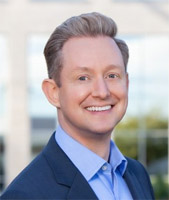The Incredible Story Of An Outsourcing Phenom

By Louis Garguilo, Chief Editor, Outsourced Pharma

In 1996, “while in grad school at MIT, my professor tossed me into the back of a truck along with the chemicals, and moved to The Scripps Research Institute in San Diego.”
So recalls Kent Pryor with a light touch on how he would wind up a component of the Southern California biotechnology boom. His former advisor is Professor Emeritus Julius Rebek, department of chemistry at Scripps, and Pryor, as CEO of ZZ Biotech, has become a one-person outsourcing phenom.
My history with Pryor starts in 2016 when he was a speaker at an Outsourced Pharma Conference in San Diego. As much as his cross-country academic pedigree (Rice University, MIT, and UC San Diego), what impressed me then was the fact that ZZ Biotech outsourced everything at the time, and Pryor had responsibility for it all.
“Generally speaking, I still do,” he says as I catch up with him some half-dozen years later.
 In fact, when we spoke recently, he remained the only full-time employee, despite having a compound — 3K3A-APC, a genetically engineered variant of recombinant activated protein C (APC) targeting ischemic stroke — heading into Phase 3, and a Phase 2 trial in progress for ALS.
In fact, when we spoke recently, he remained the only full-time employee, despite having a compound — 3K3A-APC, a genetically engineered variant of recombinant activated protein C (APC) targeting ischemic stroke — heading into Phase 3, and a Phase 2 trial in progress for ALS.
As readers know, we’ve pursued the growing role of the CEO in not only the strategic, but also day-to-day activities of outsourcing drug development and manufacturing, and managing CDMOs.
In March we held an Outsourced Pharma Live event titled, “Biopharma CEOs And CDMOs: How Involved Should They Be?” Pryor, as you might have guessed, was one of our panelists.
What we have known for quite some time is today’s virtual biopharma model itself necessitates a greater degree of CEO involvement in outsourcing activities.
Pryor is the perfect professional to further explore this theme with readers. So much so, I had the pleasure of doing the cover feature with him the 2022 CMO Leadership Awards issue (Life Science Leader magazine).
I’ve ported that narrative over to OutsourcedPharma.com to share with you. We’ll do that in two parts, starting here with the backstory to Pryor’s becoming an “outsourcing phenom.”
In part two, we’ll explore how Pryor has approached his single-handed CEO-as-outsourcer role, and get his advice – applicable to outsourcing professionals of all positions in any biopharma organization.
Alone, With Friends
A prime learning from Pryor’s experience: You may feel like a singularity at your organization, but it doesn’t mean you can’t be fully supported.
“I have a great team of contractors and consultants helping me out,” he says. “Obviously, I can’t do all of this alone, but the path we’ve chosen is to outsource all these support roles. In other words, I oversee outsourced people to oversee outsourcing activities that are happening daily.”
“My head of quality, for example, is a long-time consultant who actually predates me at the company. I have yet to hire a full-time, internal quality person.”
This seems remarkable given that in June 2020 the FDA designated 3K3A-APC as a Fast Track drug development program, and the company is on the verge of a multinational Phase 3 clinical trial in acute ischemic stroke patients.
Pryor, who joined ZZ Biotech in 2010 specifically to oversee outsourcing, reminisces how he once had a full-time head of clinical development, but, he says, “at the end of our Phase 2, I didn’t have full-time work for him, and he moved on to another company with active clinical programs.”
Which brings us to a second lesson: Stay lean, but never static.
Never static, because, as Pryor went on to say, now heading into Phase 3 it is time to restaff that clinical development leadership position.
“I’ve got that same professional working with us again as a consultant. I’m hoping to be able to call him all the way back.”
There will be others. “I’m going to have worldwide regulatory obligations to maintain,” Pryor says. “I’ve got a global safety database and pharmacovigilance requirements [both of which he’s working on outsourcing] for which I’ll need an internal resource as my main touch point for regulatory issues and to manage those related outsourced items.”
Pryor also plans to put a few heads in place as he moves into this next stage, including, for example, a dedicated project manager to manage interactions with NIH StrokeNet, the clinical trial network that will conduct the Phase 3 trial.
Is this, then, the beginning of the end of the “hyper-virtual” stage of his organization, and Pryor as a one-man outsourcing band?
He answers with a touch of circumspection:
“I’ve been at the company a long time. We’ve only needed a few manufacturing runs. Obviously, that’s going to change. I plan to stop being quite as virtual and start hiring. You have to understand when it’s time to build out your team internally.
“I figure out what tasks I really need to have done and, whether I can hire somebody full-time and keep them busy in this outsourced model. You’re putting together a puzzle. The full-time employees need to fit in at certain times and places, and you place part-time professionals around that.”
And the rest, of course, is outsourced.
But no matter the stage of “virtual” — fully lean or adding muscle to your organizational frame — Pryor says key is that understanding what needs to be done and when, which you can learn along the way by leaning on those expert consultants he mentioned above.
He describes his consultant cohort as having strong, decades-long backgrounds. “They’ve seen everything in multiple companies,” he says. “Identifying those strong contractors to hold your hand and help manage the different aspects of outsourcing is priority number one.”
Alone, but with friends, you might say. Next, we’ll focus more on that other group of friends – the CDMOs – and how he manages a whirlwind of outsourcing activity. And you won’t want to miss it when he reads off the actual meetings on his weekly calendar.
